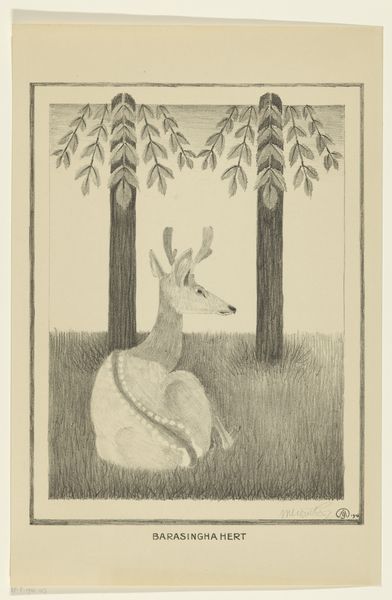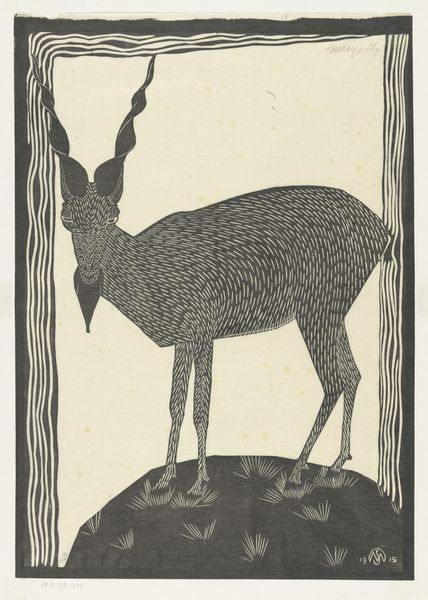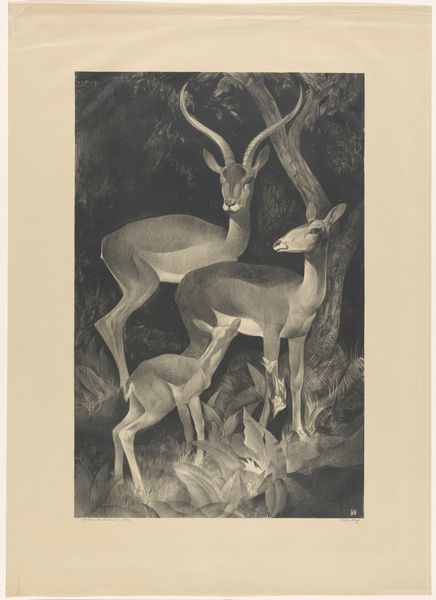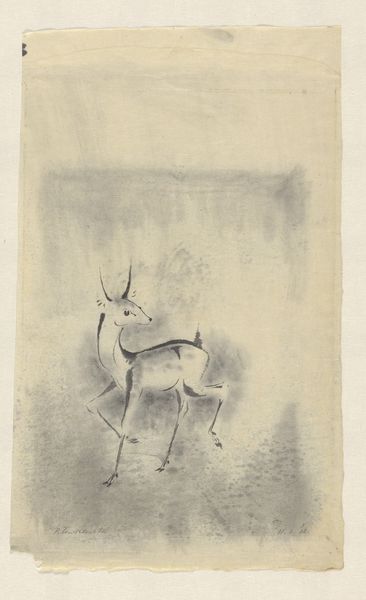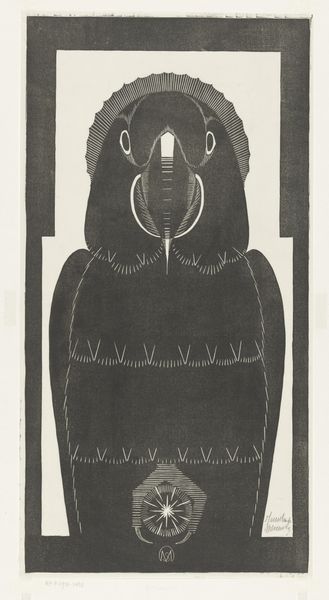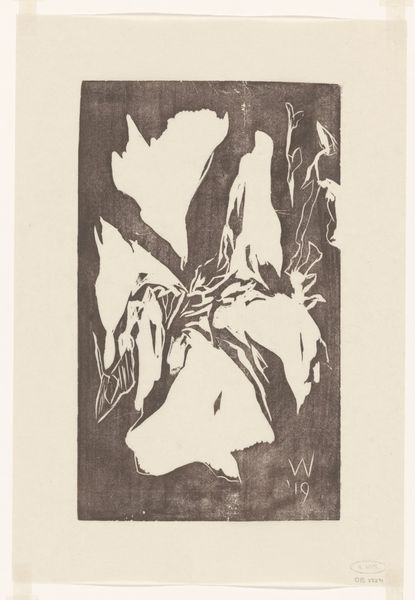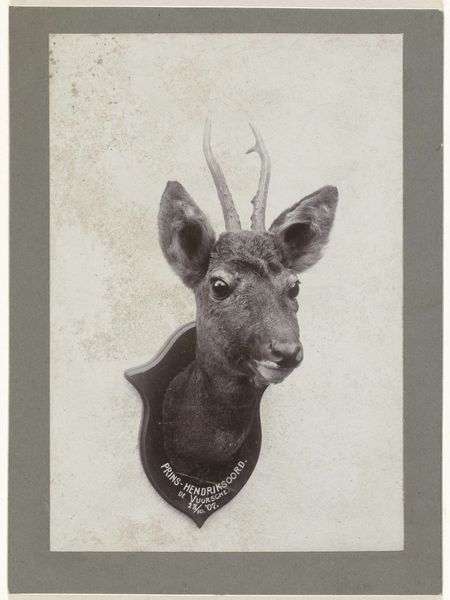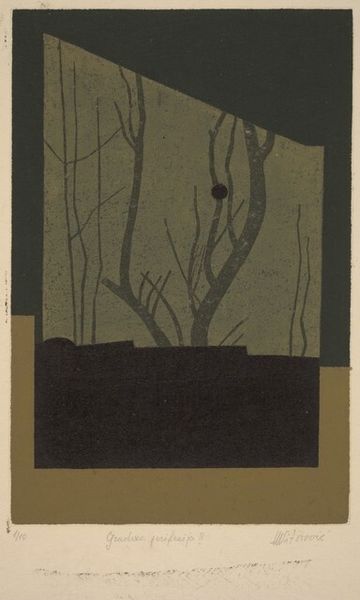
drawing, print, linocut
#
drawing
#
animal
# print
#
linocut
#
landscape
#
linocut print
#
monochrome
Dimensions: height 578 mm, width 408 mm
Copyright: Rijks Museum: Open Domain
Curator: Looking at this print, titled "Waterbok," from 1921 by Samuel Jessurun de Mesquita, I'm struck by the animal's solitary pose amidst what seems like an endless void. Editor: The linocut medium really enhances that stark feeling, doesn’t it? You can almost feel the labor that went into carving those fine lines. I'm drawn to the texture of the black ink against the paper. Curator: Yes, and it is precisely through the printmaking process that de Mesquita simplifies and flattens the image, abstracting the animal. Given the sociopolitical environment of the time, specifically growing colonial fascination, one might consider the imagery of this artwork and ask if de Mesquita sought to critique exoticization and colonial displays through an aestheticised rendering of African wildlife. Editor: Interesting. For me, the lack of a traditional pictorial background and the animal’s placement near the bottom create a sense of unease. Considering that linocuts gained traction with artists seeking accessible means of mass production, I wonder to what extent de Mesquita engaged in the growing culture of printmaking that democratized artistic consumption at that moment in time? How many copies of “Waterbok” did he intend to make, and to whom did he sell it? Curator: Those are critical questions for contextualizing its purpose! Also, the print would have circulated within an expanding print market fueled by both artistic and commercial ambitions. One must acknowledge how galleries, cultural organizations, and increasing consumer culture facilitated the display and selling of artwork by local and international printmakers like de Mesquita at this time. Editor: Exactly! Its formal simplicity invites discussion about how these animals were being depicted in popular media and the public consciousness. It seems the artist sought to make a bold statement via stark, reduced forms, reflective perhaps of growing anxieties in European culture between the wars? Curator: Agreed, a very poignant point. Through the use of contrasting tones achieved with the linocut medium, we can unpack meanings related to labor and how art can offer compelling interpretations of the sociopolitical backdrop from the artist's milieu. Editor: The production aspect deepens my appreciation. Curator: And looking into the animal's posture and position offers even richer insights when studied within a wider sociohistorical and institutional framework.
Comments
No comments
Be the first to comment and join the conversation on the ultimate creative platform.
